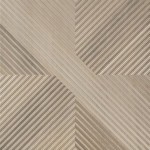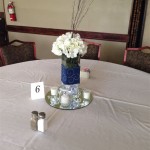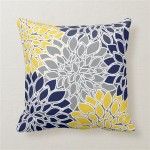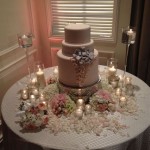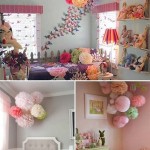How to Hang Decorative Plates
Decorative plates offer a unique and personalized touch to interior design. These items, often collected over time or inherited, can transform blank walls into captivating displays. Successfully hanging decorative plates requires careful planning, the right tools, and a secure method to ensure they remain safely displayed. This article provides a comprehensive guide to hanging decorative plates, covering various methods and crucial considerations for a professional and secure installation.
Before commencing the hanging process, several preparatory steps are essential. The first involves assessing the plates themselves. Understanding the material composition, weight, and size of each plate is crucial for selecting the appropriate hanging hardware. Porcelain, ceramic, and glass plates each require different levels of support. Heavy plates necessitate more robust hanging solutions than lighter, thinner ones.
Next, the desired arrangement on the wall must be planned. Consider the size and shape of the wall space, the color scheme of the room, and the overall aesthetic desired. Plates can be arranged in symmetrical patterns for a formal look, or in asymmetrical groupings for a more relaxed and eclectic feel. It is advisable to lay the plates out on a large surface, such as the floor or a table, to experiment with different arrangements before committing to a specific layout on the wall. Taking photographs of different arrangements can be helpful in making a final decision.
Once the arrangement is finalized, the wall must be prepared. Identify the location of studs using a stud finder. While not always necessary for lighter plates, utilizing studs provides the most secure anchoring point for heavier items. Mark the locations of the studs and the desired placement of each plate on the wall using a pencil or painter’s tape. Painter’s tape is preferable as it is less likely to damage the wall’s surface.
Gather all necessary tools and materials before beginning the installation. These typically include a measuring tape, level, pencil, drill, screwdriver, appropriate drill bits, wall anchors (if not using studs), plate hangers or adhesive discs, and safety glasses.
Choosing the Right Hanging Method
Selecting the appropriate hanging method is pivotal for the safety and appearance of the displayed plates. Several options exist, each suited to different plate types and wall conditions.
Plate Hangers: Spring-loaded plate hangers are a common and versatile option. These hangers feature metal arms that grip the edges of the plate, providing a secure hold. They are available in various sizes to accommodate different plate diameters and weights. To use a plate hanger, gently stretch the arms of the hanger to fit around the plate, ensuring that the arms grip the plate securely. The hanger then has a hook or loop at the top, which can be hung on a nail or hook in the wall. Spring-loaded plate hangers are generally suitable for plates made of ceramic or porcelain.
Adhesive Disc Hangers: Adhesive disc hangers offer a no-drill alternative for hanging plates. These discs utilize a strong adhesive to attach to the back of the plate. They are best suited for lighter plates and smooth, non-porous surfaces. Before applying an adhesive disc, thoroughly clean the back of the plate with rubbing alcohol to remove any dust or grease. Peel off the backing from the adhesive disc and firmly press it onto the center of the plate. Allow the adhesive to cure for the recommended time, as indicated by the manufacturer, before hanging the plate. When removing plates hung with adhesive discs, it is often necessary to gently heat the adhesive with a hairdryer to soften it and prevent damage to the wall or plate.
Wire Plate Hangers: Wire plate hangers are often used for heavier or irregularly shaped plates. They consist of a wire frame that cradles the plate and a hook for hanging. These hangers require more careful adjustment to ensure the plate is evenly supported and does not wobble. Adjusting the wires involves carefully bending and shaping them to conform to the contours of the plate. Wire hangers can be less aesthetically pleasing than other options as the wires are often visible from the front.
Using a Drill and Screws: In certain situations, it may be necessary to drill directly into the wall to provide a more secure anchor for the plate. This method is typically reserved for heavier plates or when hanging plates on walls that are not structurally sound. To use this method, first drill a pilot hole into the wall at the desired location. If drilling into a stud, no wall anchor is necessary. If drilling into drywall, use a wall anchor to provide additional support. Insert a screw into the wall anchor or stud, leaving enough of the screw exposed to hang the plate hanger or wire. This method offers the most secure attachment but requires more skill and precision.
Ensuring a Level and Secure Installation
Achieving a level and secure installation is crucial for the visual appeal and safety of the displayed plates. This involves precise measurements, careful alignment, and the use of appropriate hardware.
Measuring and Marking: Accurate measurements are essential for creating a visually appealing arrangement. Use a measuring tape to determine the distance between plates and the height at which they will be hung. Mark the locations of the hanging points on the wall using a pencil or painter’s tape. Double-check all measurements before proceeding to ensure accuracy.
Using a Level: A level is indispensable for ensuring that the plates are hung straight. After attaching the plate hanger or adhesive disc to the plate, use a level to align the plate with the marked location on the wall. Adjust the position of the plate until it is perfectly level. This step is particularly important for symmetrical arrangements, as even a slight deviation from level can be noticeable.
Securing the Plates: Once the plates are level, ensure that they are securely attached to the wall. For plates hung using spring-loaded hangers or wire hangers, ensure that the hanger is securely attached to the nail or hook in the wall. For plates hung using adhesive discs, periodically check the adhesion of the disc to the plate and wall. If signs of loosening are observed, reinforce the adhesion with additional adhesive or a more secure hanging method. For plates hung using screws and wall anchors, ensure that the screws are securely tightened and that the wall anchors are properly installed.
Addressing Wall Type Variations: Different wall types necessitate varied approaches. Drywall, for example, benefits from the use of wall anchors to distribute weight effectively. Plaster walls can be more brittle and may require pre-drilling pilot holes to prevent cracking. Brick or concrete walls require specialized drill bits and concrete anchors for secure attachment. Understanding the wall's composition is therefore crucial for selecting the appropriate installation method.
Dealing with Irregular Plate Shapes: Some decorative plates have irregular shapes or uneven backs, making them challenging to hang. In these cases, consider using custom-made supports or modifying existing hangers to provide a more secure and stable hold. One solution is to use multiple adhesive discs or wire supports to distribute the weight more evenly. Another option is to create a custom-fitted frame or cradle for the plate to provide additional support. The key is to ensure that the plate is securely supported and will not slip or fall.
Considerations for Specific Plate Types
The material and fragility of the plate itself also influence the optimal hanging technique.
Fragile Plates (e.g., Antique Porcelain): Antique or delicate porcelain plates require extra care. Opt for methods that minimize stress on the plate, such as using padded plate hangers or custom-made supports. Avoid using adhesive discs on delicate surfaces, as the adhesive may damage the plate. Always handle fragile plates with care and wear gloves to prevent fingerprints or scratches.
Heavy Plates (e.g., Ceramic Platters): Heavy plates necessitate robust hanging solutions. Employ heavy-duty plate hangers or screw directly into wall studs for maximum support. Consider using multiple hanging points to distribute the weight evenly and prevent the plate from falling. Regularly inspect the hanging hardware to ensure it remains secure.
Plates with Decorative Edges: Plates with ornate or irregular edges can be difficult to hang using standard plate hangers. In these cases, consider using wire plate hangers that can be adjusted to conform to the shape of the plate. Alternatively, create a custom-fitted frame or cradle for the plate to provide additional support and protection for the decorative edges.
By carefully considering the plate's material, weight, and shape, and by selecting the appropriate hanging method and hardware, a secure and visually appealing display can be achieved. Regular inspection of the hanging hardware is recommended to ensure that the plates remain securely attached to the wall. Following these guidelines allows for the safe and attractive display of decorative plates, enhancing the aesthetic appeal of any living space.

My Secret Method To Install A Plate Wall Pender Peony Southern Blog

How To Hang Plates On A Wall Farmhouse Boone

The Best Way To Hang Plates On Wall Securely How Vintage And Platters
How To Hang Plates On Backsplash Addison S Wonderland

How To Hang Plates On A Wall Farmhouse Boone

The Easiest Way To Hang Decorative Plates On Your Wall This Real Mom Midlife Fat Loss Coach

How To Make Plate Hangers But Good Empress Of Dirt

How To Hang A Plate Wall Orc Week Four An Oregon Cottage

How To Hang Plates On A Wall The Home

How To Hang Plates On The Wall And Not Damage Them House With Home


